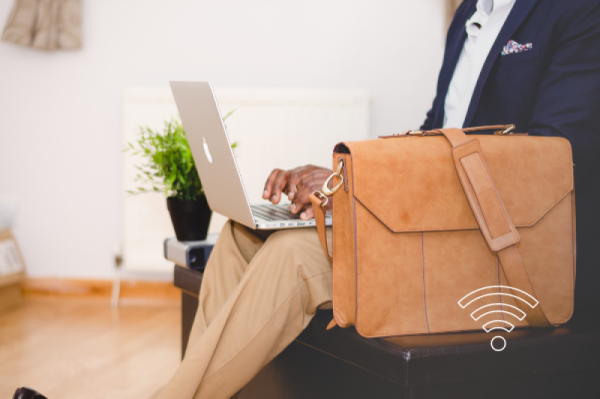With the average American household paying $60/month for their home internet, it can be expensive to stay connected at home. Or maybe you simply have a network outage in your area. Know what your options if there’s no Wi-Fi after a power outage. Whatever the case may be, there are still ways to get Wi-Fi and internet without having internet service at home.
Turn your phone into a Wi-Fi hotspot anytime, anywhere
If you don’t want to pay for an internet plan, you can use your smartphone as a mobile hotspot connection. Most cell phones offer a setting that lets you turn your phone into a hotspot by using your mobile data plan, a method known as mobile tethering. That means you can connect your laptop, tablet or any other device to your mobile hotspot, which works just like normal Wi-Fi without internet at home.
There are a couple things to keep in mind when you use mobile tethering to connect other devices. Mobile data plans tend to load information and images from the internet slower than a home internet network. Also, if your mobile phone plan has a limited amount of data to use each month, you might burn through your data very quickly and your mobile data speeds might become throttled. You’ll want to use your hotspot sparingly, especially if you’re trying to stream Netflix or YouTube.
If you see that you’re hitting your mobile data limit very quickly each month, it might be more cost effective to purchase a home internet plan. Home internet plans not only offer more data, you might be able to use one of the thousands of free nationwide hotspots that come with the plan.
Purchase a mobile hotspot
You can purchase a mobile hotspot device to connect other devices such as your laptop to the internet. It will require an upfront payment for the device itself, which usually runs anywhere from $25 to $100 and will need a mobile hotspot plan to go with it. With a mobile hotspot device, you don’t have to find a coffee shop just to connect your laptop to the internet. In fact, travelers like to use mobile hotspot devices because it’s an easy way of having portable Wi-Fi in your pocket, and some can even work overseas. It allows you to connect multiple devices at the same time to Wi-Fi anywhere there’s a signal. Mobile cell phone carriers like AT&T and Sprint offer a variety of mobile hotspots for purchase and other companies can do rentals.
Purchase a Wi-Fi USB dongle
If you’re only connecting one laptop, a Wi-Fi USB dongle is an often cheaper alternative to mobile hotspot devices. You can insert any 3G or 4G SIM card and use its data connection to access the internet. Unlike a mobile hotspot device, it can’t connect multiple devices at the same time and might have a weaker signal.
Use nationwide hotspots with your home internet plan
If you already have an internet plan at home, you might be able to access thousands of free nationwide hotspots on-the-go. With providers like Cox, Optimum, Xfinity and Spectrum offer free Wi-Fi hotspots to their residential internet customers. This is an easy and free way to save your mobile data on the go. All you have to do is look for a Wi-Fi connection from your provider on the go and log in using the credentials given to you by the provider.
Find free public Wi-Fi
Many coffee shops, restaurants, shopping malls, public libraries and even transportation stations offer free internet. Public Wi-Fi speeds are usually a lot faster than Wi-Fi hotspots from a mobile plan and can help you save on your data usage.
Just keep in mind that most places that serve food and beverages expect you to be a paying customer to use their internet connection. Security over these free public Wi-Fi spots tend to be very lax. That means online banking, signing into your email, accessing your healthcare portal and other everyday tasks that require a login is risky on a public internet connection. Private information can be exposed to cyber hackers, but there are steps you can take to protect yourself.
One way to protect yourself is to always use a VPN (virtual private network) that establishes a secure connection and prevent potential cyberattacks on public Wi-Fi. Your laptop’s antivirus might provide this feature for as little as a few bucks a month, or you can purchase a plan through other VPN companies. Either way, you want to choose a VPN from a company that you trust and avoid free VPNs as they can sell your information to third parties. New devices like the Samsung Galaxy has a Secure Wi-Fi feature that protects up to 250 MB of data a month for free with the option to upgrade your plan.
Quick Recap: There are many ways you can still connect to Wi-Fi internet without subscribing to an internet plan. However, Wi-Fi hotspots, dongles and mobile tethering on your smartphone will typically have slower speeds and smaller data allowances compared to home internet. It might even be more cost efficient to purchase a home internet plan if you use a lot of data. And if you’re planning to use free public Wi-Fi often, beware of the security dangers and protect your information with a VPN.


